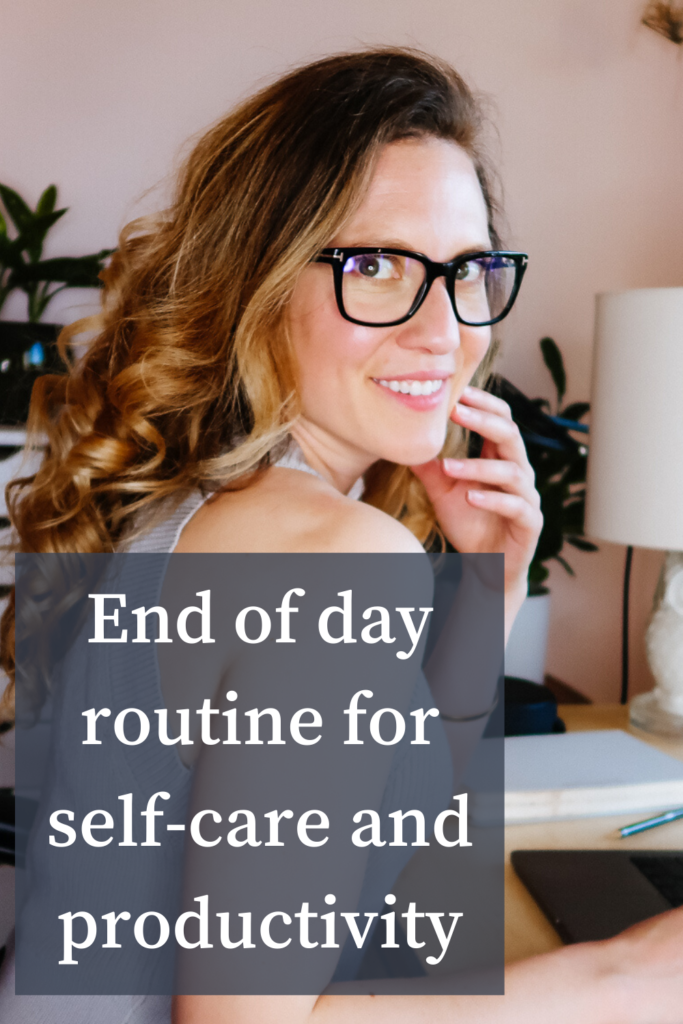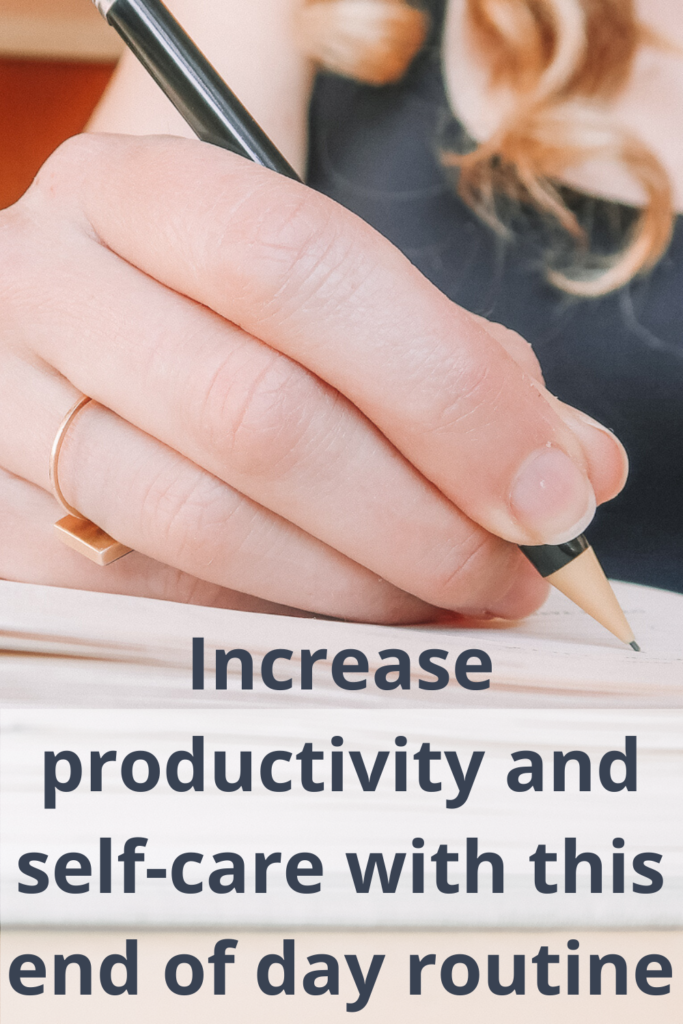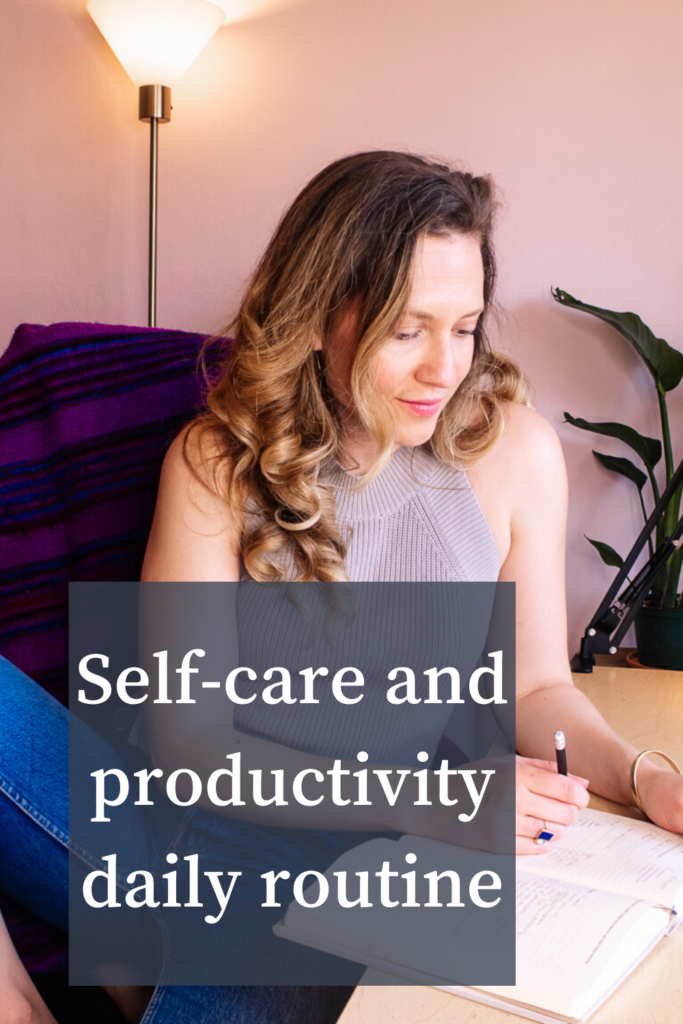I’ve worked from home for years, as an employee and more recently as an entrepreneur. It seems like the ideal set up, and in many ways it is, but it can be challenging to separate your work and home life. The number one thing that helped me to create balance is my end of work day routine.
When we work from home (and even when we don’t) it can be difficult to leave work behind at the end of the day. We find our minds drifting back to what we might have forgotten or an upcoming deadline. We may even get into the habit of popping open our laptop to do “just one more thing”.
It doesn’t help that working around the clock is glorified in hustle-porn. We are constantly bombarded with articles and inspirational images, helping us to push harder and do more.
Hustle, sleep, repeat.
The reality is, when you don’t give your mind a rest from your business, or your task list, you’re actually hurting your output.
Creating boundaries between work time and personal time, allows you to approach both parts of your life, refreshed. Which means, more creative ideas, more enthusiasm for your work, and most important, a lower chance of burnout. By pacing yourself, you’re not only producing better work, but you are actually able to rest and enjoy yourself in the process.
“People overestimate what they can do in a day and underestimate what they can do in a year.”
This transition to a more balanced life doesn’t have to be an overnight change. If you are anything like me, it’ll take some time to settle into a new flow. In the meanwhile, you have to trust that you can actually get more done, without working around the clock.
A simple way to start is to create an end of workday routine. This is a gradual process – something that you will build and tailor to what works best in your life.
Start small. A great way to begin is by completing the first two steps below, consistently for a week, and then building from there.
Important: Don’t skip the parts that feel silly. There’s a good chance you’ll want to skim through and do just the most practical steps. Resist the urge. Every step serves a purpose. The parts that may seem unnecessary are designed to, not only make the process more enjoyable, but more likely to stick. Which makes you more likely to reap the benefits. See what works, see what doesn’t, but don’t hold back from trying the parts that aren’t as obviously practical.
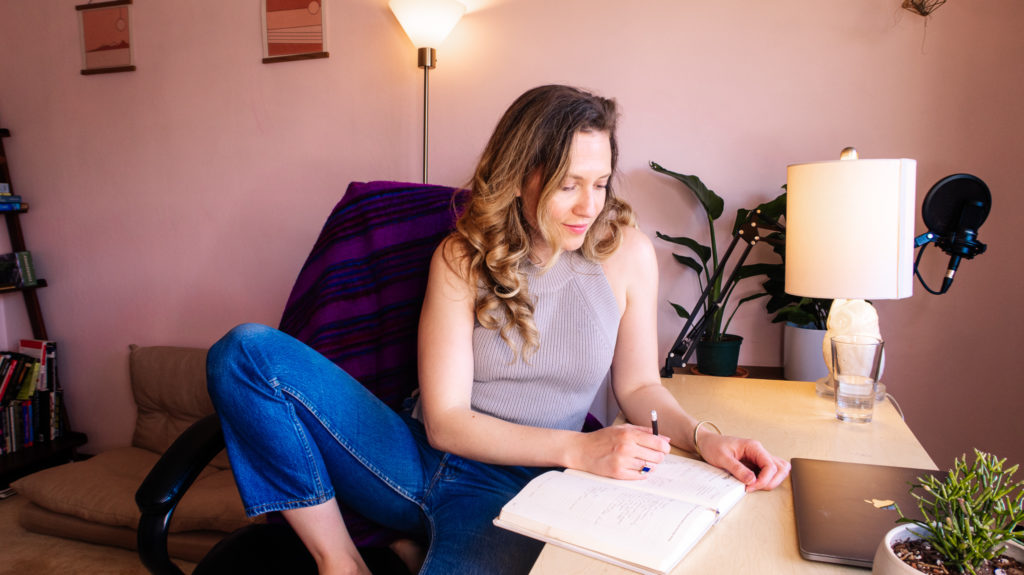
Pick a clock-out time
When you are first getting started, take this day by day. Look over your calendar in the morning and see what time makes sense for you to finish your work day. Then, set an alarm for that time. Keep in mind that you’ll need a few minutes to wrap up and transition to whatever you plan to do next.
Pro tip: Make it a different sounding alarm than the one you use to wake up. Something calming like a gentle chime works great.
Mind the alarm
When your alarm sounds, turn it off and immediately open up your Spotify/Pandora/iTunes – and put on a favorite song or playlist.
Do this before you finish whatever you were working on.
Don’t overthink it, just throw something on that makes you feel good. If you want, you can pick out the playlist or couple of songs in advance.
If you are already listening to music, switch up the playlist or genre. The point is for you to signal to yourself that this part of your day is coming to an end. Don’t be afraid to stretch your arms out overhead, take a deep breath, and notice how your body feels.
Note: This is one of those parts that you may feel the urge to skip. Or maybe you’ll see it as a permission slip to do something a little different and fun. Try it out for a few days. Changing the music to something that feels good, getting in a good little stretch – these are things worth doing. They make you feel good, snap you out of whatever you were working on, and start the transition to the next part of your day. Give it a few days and you may even find yourself looking forward to this musical break.
Wrap up
Now that the mood is set, go back and wrap up what you were working. Save your work, bookmark your tabs, do what you need to do to close out. This shouldn’t take more than 5 minutes, you aren’t finishing the activity, just tying up loose ends.
Review
Look over your task list from today. Did you forget to check off anything you did? Go ahead and mark those off (feels so good).
If there is anything left over, see what you’d like to carry over to tomorrow, what can be moved to a general to-do list and what is no longer important.
Get curious
Notice how you are feeling as you review your list. I tend to beat myself up over, well, a lot of things, and not being as productive as I expected is one of them.
Some days you aren’t going to as much done as you thought you would, and that’s okay.
This is the perfect opportunity to not only, show yourself some true self-love, but also to get curious about what happened.
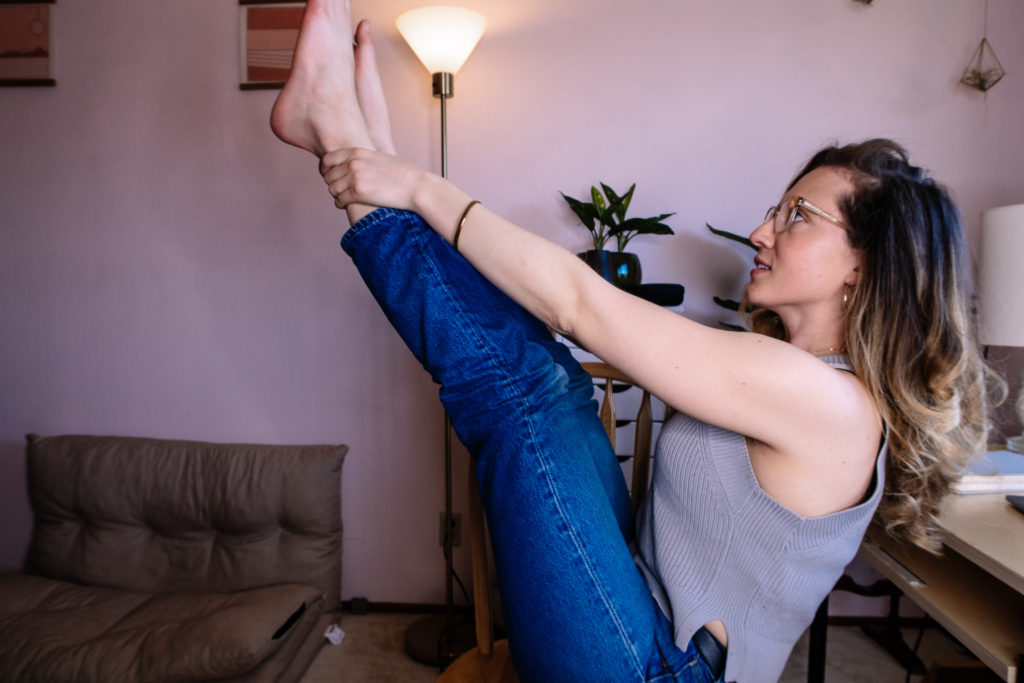
It’s usually one of 3 things:
1. There was an unforeseen obstacle that hijacked some of your time. Hey, it happens. It might have been a technical issue on your computer, a plumbing issue in your house, or a toddler’s emotional meltdown.
2. You spent time doing things other than what you meant to do. AKA procrastinating, or as it commonly appears in my world – procrasticleaning: v. when you sit down to write and then you notice some lint on the floor, which reminds you that you need to throw in a load of laundry, and all of a sudden it’s evening, and you are no closer to finishing your article. Even just noticing when this happens can help you to shift this behavior.
3. You overestimated your work capacity. Nothing went wrong, it just took you longer than expected.
[/et_pb_text][/et_pb_column][/et_pb_row][et_pb_row _builder_version=”4.3.4″][et_pb_column type=”4_4″ _builder_version=”4.3.4″][et_pb_text _builder_version=”4.3.4″ text_font_size=”17px” text_line_height=”1.8em”]
I find this last one to be the most annoying of the options because it means that I have to accept that I can’t do it all.
In reality, it’s a wake up call to prioritize what’s most important.
On any given day, you should have 1-3 priorities, meaning, if you only did those three things, then the day would be a success. (Outside the everyday recurring tasks and routines that keep the lights on for you.)
If you are like me and are used to running through a massive task list, this may sound ridiculous, maybe even naive. The reason that it’s important to rank your top one to three tasks is simply that you are more likely to get them done.
Period.
Ever had a mile-long to-do list and noticed that you’ve “productively” worked your way down the list meanwhile dancing around the hardest (and often, most crucial) tasks?
The other thing that prioritization does is it sets us up to feel good about what we’ve accomplished. Just think about it. If, like most of us, you have a long ongoing to-do list, you’ll feel accomplished each time you check a task off, but you’ll never feel done.
When you know that you worked to get through your most important items, then you can end the day feeling good about having done your best.
The more we are honest with ourselves about what is realistic, and the better we can get about prioritization, the more effective we can be while still practicing self-care.
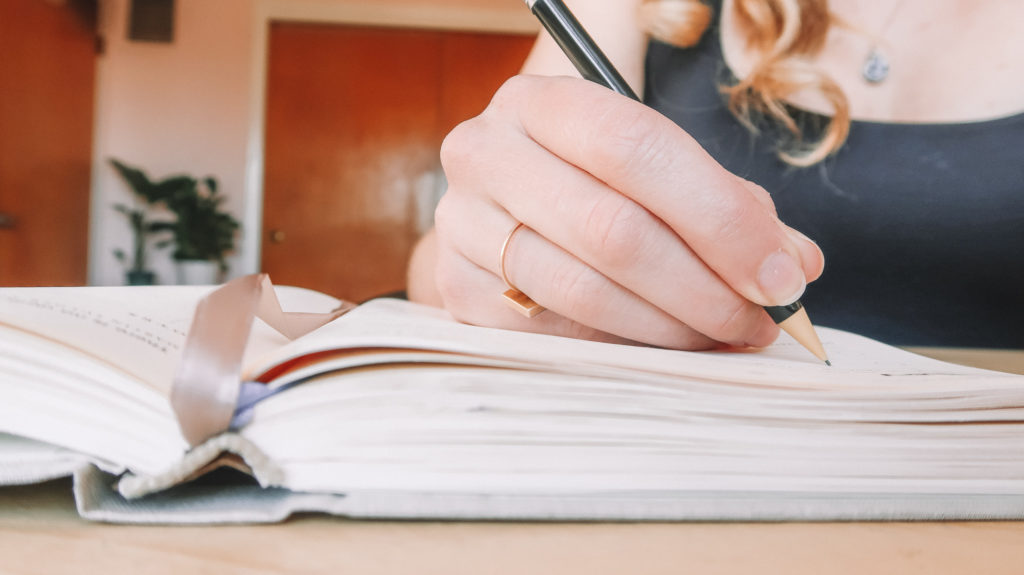
Prepare for tomorrow
Look at what’s on tomorrow’s calendar, review your weekly goals, and leftover tasks from today.
Now, list your top three goals for tomorrow, followed by any smaller less important tasks (if necessary).
Tip: I highly recommend using a paper planner or notebook for this. Even if you use a digital calendar, and/or task management tool, there is a large benefit to using their analog counterparts for your daily tasks. It helps to slow you down and plan from a less reactive mindset.
Power down
Turn off your computer.
Hear me out. I am well aware that our work computer is usually our personal computer. Even if I’m planning to use my laptop again that same day, I will still power it down, to signal to myself that this part of the day is over. It also acts as a forcing function to close out tabs that I’ve accumulated and keep my digital workspace clean.
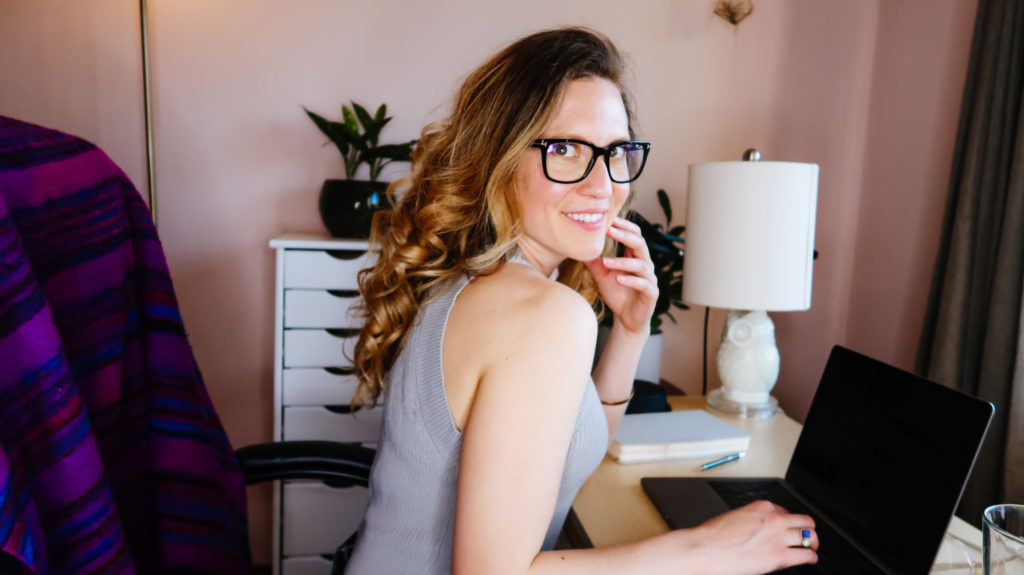
Tidy up your space
Clean up your workspace and make it look inviting for the next day. Clear off any mugs or water glasses. Organize papers, leave open space, and give your list or planner a space to live.
Tip: If you don’t have plants in your space, a little desk plant creates a nice lively and grounded atmosphere.
Get out of there
Physically move to another space. Even if you leave for just a few minutes or shift just a few feet (hello, city apartments). Signal to yourself that work is over.
If possible, give yourself a transition activity. Going for a short walk, doing yoga, meditating, exercising are all great options. You want to give yourself a little buffer before launching into the next part of your day.
The most important (and challenging) part about building a wind-down routine, isn’t the actions themselves.
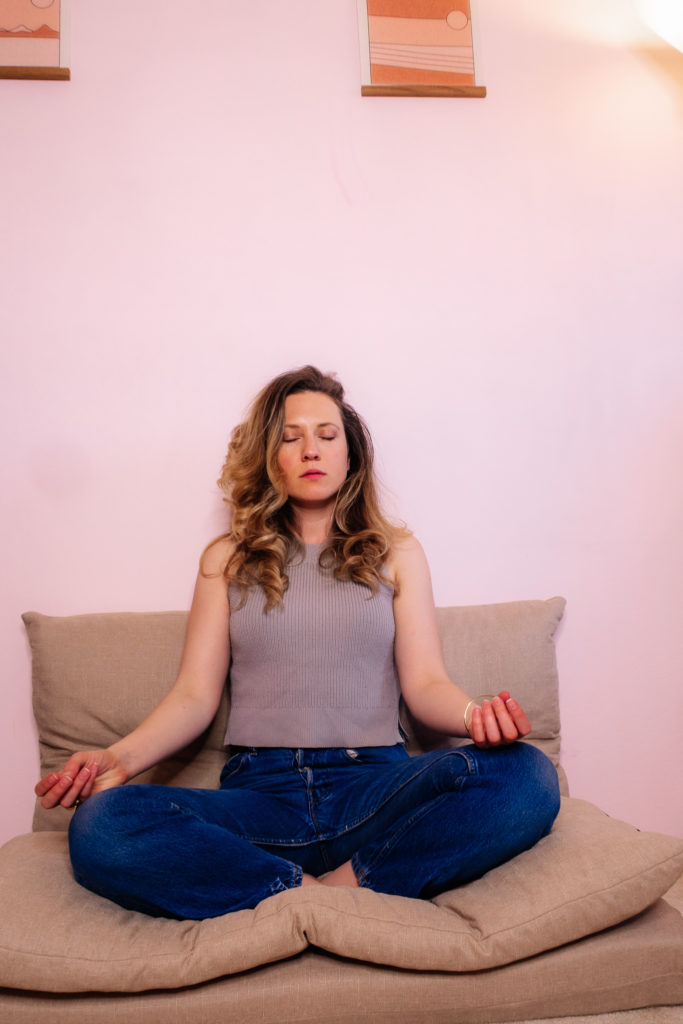
It’s about being honest with, and getting in the habit of keeping promises to, yourself. You’ll feel tempted to do “just one more task” or spend “just five more minutes”, especially if you are driven. The more often you can keep the boundaries that you set, the stronger your self-trust grows. Sending the signal that you’ve got your own back.
When you know that your needs will be taken care of and you aren’t going to break promises to yourself, something shifts. You become more enthusiastic about your work, and you are more easily able to switch to relaxation mode when it’s time. By prioritizing and setting boundaries, you begin build the foundation of a work and life flow that feels good and that’s real self care.
Pin for later
